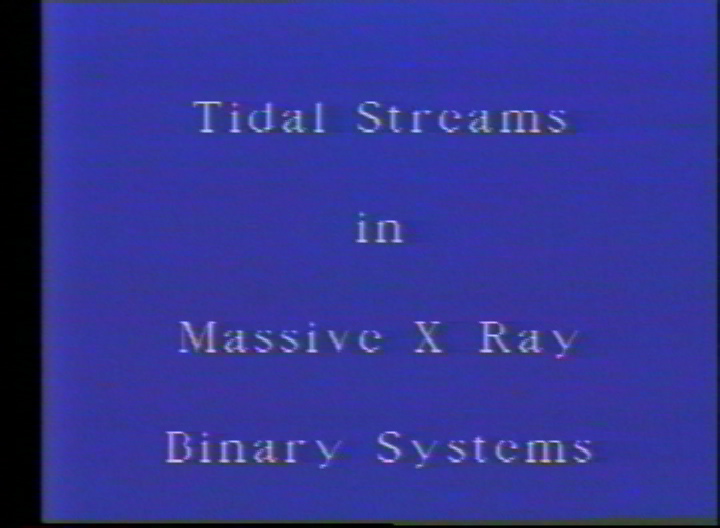Universe
ID: 1
A tiny neutron star orbits incessantly around a massive star with a diameter a million times larger than its own. The high luminosity of the massive star drives a strong wind from its surface. The neutron star crashes through this wind at over 300 kilometers per second. The gravity and X-ray luminosity of the neutron star act to disrupt the wind, producing an extended wake of dense gas trailing behind the neutron star. In this simulation, the tidal distortion of the primary star and the resultant tidal stream is shown. The numerical simulations depicted here were computed using the Cray X-MP 48 at the National Center for Supercomputing Applications, University of Illinois, Urbana-Champaign.

Tidal Streams in Massive X-ray Binary Systems

Visualization Credits
John Blondin (NASA/GSFC): Lead Animator
Alan McConnell (NASA): Animator
John Blondin (NASA/GSFC): Scientist
Ian Stevens (NASA/GSFC): Scientist
Tim Kallman (NASA/GSFC): Scientist
Bruce Fryxell (The University of Arizona): Scientist
Ron Taam (Northwestern University): Scientist
Alan McConnell (NASA): Animator
John Blondin (NASA/GSFC): Scientist
Ian Stevens (NASA/GSFC): Scientist
Tim Kallman (NASA/GSFC): Scientist
Bruce Fryxell (The University of Arizona): Scientist
Ron Taam (Northwestern University): Scientist
Please give credit for this item to:
NASA/Goddard Space Flight Center Scientific Visualization Studio
NASA/Goddard Space Flight Center Scientific Visualization Studio
Science Paper:
Blondin, J. M., Kallman, T. R. , Fryxell, B. A., Taam, R. E., Hydrodynamic Simulations of Stellar Wind Disruption by a Compact X-ray Source, ApJ, 356, 591-608, 1990
Short URL to share this page:
https://svs.gsfc.nasa.gov/1
This item is part of this series:
Neutron Star Tidal Distortion
Keywords:
SVS >> Neutron Star
DLESE >> Space science
SVS >> Stellar Wind
NASA Science >> Universe
Blondin, J. M., Kallman, T. R. , Fryxell, B. A., Taam, R. E., Hydrodynamic Simulations of Stellar Wind Disruption by a Compact X-ray Source, ApJ, 356, 591-608, 1990
Short URL to share this page:
https://svs.gsfc.nasa.gov/1
This item is part of this series:
Neutron Star Tidal Distortion
Keywords:
SVS >> Neutron Star
DLESE >> Space science
SVS >> Stellar Wind
NASA Science >> Universe











